Introduction
Discrete Trial Teaching (DTT) is a structured instructional strategy used in Applied Behavior Analysis (ABA) therapy to enhance learning in individuals with autism and other developmental disorders. This method breaks down complex tasks into smaller, manageable steps, allowing for step-by-step instruction and mastery of each component. Recent guidelines emphasize the importance of high-quality implementation of ABA practices, and the introduction of innovative procedures like Interview Informed Synthesized Functional Analysis (IISCA) has further improved the assessment of problem behaviors.
In a challenging period where behavioral issues have intensified, ABA therapy methods, supported by robust content knowledge and pedagogical skill, offer tailored and effective interventions. This article explores the key steps in DTT, the objectives of this teaching approach, and strategies for effective implementation. Additionally, it addresses the importance of individualized adaptations, positive reinforcement, minimizing errors, data collection, and challenges faced in DTT.
By understanding and applying these principles, parents and advocates can navigate the challenges their children face and ensure their well-being.
What is Discrete Trial Teaching?
Discrete Trial Teaching, or DTT, is a structured teaching approach integral to Applied Behavior Analysis (ABA) therapy, aimed at enhancing learning in individuals with autism and other developmental disorders. This method meticulously simplifies complex tasks into smaller, digestible components, enabling step-by-step instruction. By focusing on each individual component, the learner is equipped to master each task, thereby constructing a foundation for acquiring new skills and conceptual understanding.
Recent guidelines from the Council of Autism Service Providers underscore the necessity for high-quality implementation of ABA practices. As a board-certified behavior analyst with extensive clinical experience notes, leveraging technology can enhance the quality and coordination of care in ABA therapy. With the introduction of procedures like Interview Informed Synthesized Functional Analysis (IISCA), there is now a nuanced method to ascertain the multifaceted nature of problem behaviors, assessing several potential reinforcers within one session.
Amidst a challenging period where behavioral issues have intensified for many individuals with autism, the evolution of ABA therapy methods—underpinned by robust content knowledge and pedagogical skill—promises tailored, effective interventions. This progression ensures that each learner's unique needs are met, fostering an environment where personalized strategies are not just a concept, but a practice.

Objectives of Discrete Trial Teaching
Discrete Trial Teaching (DTT) is a structured instructional strategy that enhances learning by breaking down complex tasks into manageable steps. By delivering these steps systematically, DTT facilitates an understanding of the task at hand and fosters a greater capacity for following instructions. This method, which plays a critical role in cognitive development, is especially potent in teaching mathematical concepts, where content knowledge (CK) and pedagogical content knowledge (PCK) are paramount.
As research in Instructional Science indicates, the meticulous design of learning environments, informed by an understanding of how learning occurs, can significantly impact student outcomes. Furthermore, combining DTT with multisensory activities, as suggested by resources like the Numeracy Activity Book, can reinforce learning and cater to diverse student needs, aligning with the educational imperative of equipping learners with essential skills for a knowledge-based economy. This approach aligns with Merrill's Principles of Instruction, which emphasize real-world relevance and activating prior knowledge to engage learners in meaningful problem-solving.
By leveraging DTT in conjunction with these Educational Insights, educators can cultivate robust mathematical understanding and foster an environment conducive to academic success.
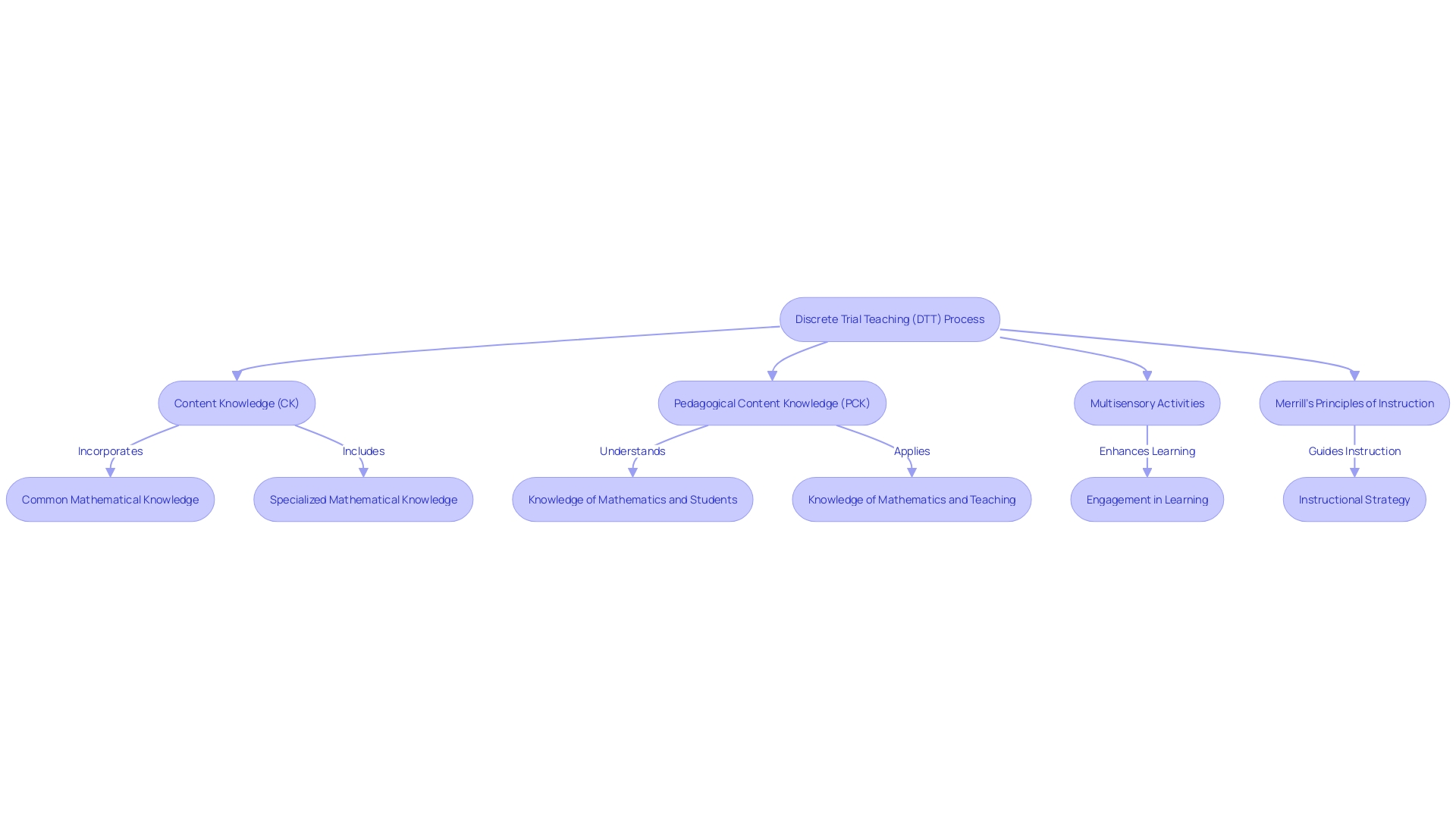
Key Steps in Discrete Trial Teaching
Discrete Trial Teaching (DTT) is a structured ABA technique that breaks down skills into small, manageable steps. This method is pivotal for children with autism and ADHD, as it allows for personalized learning experiences that cater to their individual needs. The process of DTT involves a series of steps that guide the child from initial learning to mastery of a skill.
When implementing DTT, it is critical to identify what success looks like for each child. This individualized approach aligns with the concept of Experience First, Formalize Later (EFFL), which emphasizes meaningful, collaborative problem-solving before formal rules are introduced. Through EFFL, the focus is on flexible thinking and ensuring success for all students, regardless of their starting point.
Understanding cognitive load theory is key in applying DTT effectively. Cognitive load theory suggests that learning is optimized when unnecessary cognitive burdens are reduced, allowing the child to concentrate on the most relevant information. This theory underpins the efficacy of worked examples in mathematics education, where students study the steps of a problem that has been solved, reducing the cognitive load and enhancing understanding.
Statistics show that both content knowledge (CK) and pedagogical content knowledge (PCK) are crucial for effective teaching. DTT leverages this understanding by ensuring that the interventionist has a deep grasp of both the skills being taught and the most effective ways to teach them to children with diverse learning needs.
Drawing from real-world applications, such as the use of variable practice in basketball training, DTT incorporates variability to enrich learning. This approach ensures that children can apply their skills across different settings, enhancing generalization and retention.
The expertise of Board-Certified Behavior Analysts, who specialize in creating high-quality, coordinated care and technology solutions for ABA therapy, further supports the effectiveness of DTT. Their clinical knowledge and experience in diverse treatment settings contribute to the ongoing refinement of DTT as a best practice approach.
In conclusion, DTT is more than just a teaching strategy; it's a comprehensive framework that, when executed with precision, can unlock the potential of children with autism and ADHD, setting them up for long-term success.
Step 1: Preparation and Setting
Setting the stage for an effective ABA session involves more than just a well-lit room and a table. It's about crafting an environment that minimizes distractions, ensuring all necessary materials are readily accessible, and confirming that the child's attention is fully captured. This preparation is not only about physical space but also about the mental readiness of the child to embark on the learning journey.
A diligent approach to this setup, backed by a Board-Certified Behavior Analyst with extensive experience across treatment settings, underscores the importance of a tailored learning environment that aligns with best practices and contributes to high-quality, coordinated care. Research underscores the complexity of designing interventions that truly cater to the unique behavioral needs of children, particularly those with autism. It is crucial to recognize that each child's response to different stimuli and interventions can vastly differ, which is why the initial setup is as critical as the intervention itself.
A meticulous approach to the learning environment is a cornerstone of ABA therapy's success, reflecting a deep understanding of the nuanced needs of children on the autism spectrum.
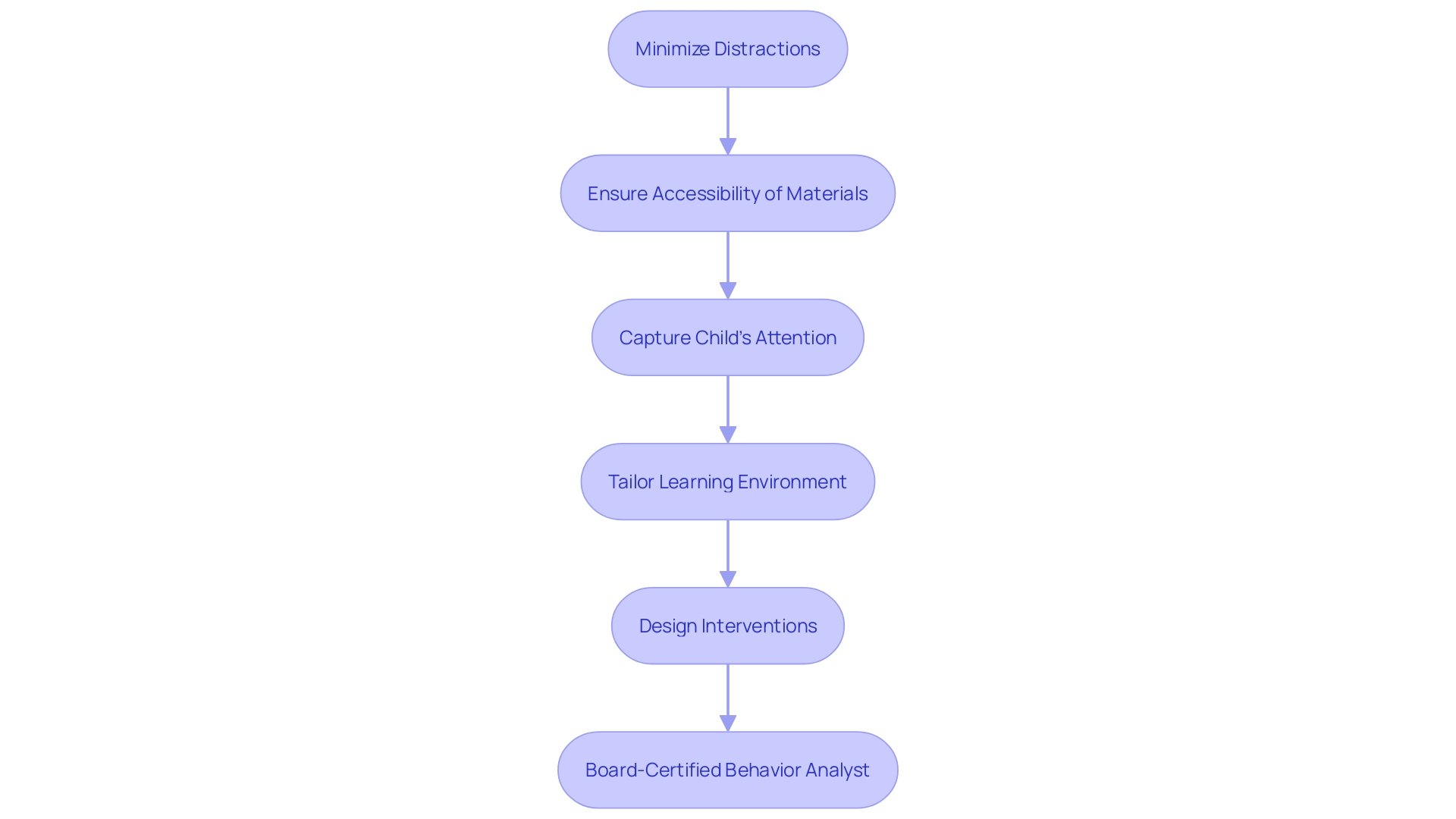
Step 2: Presentation of the Stimulus
A crucial element in the educational process is the delivery of instructions that are both clear and tailored to the learner's capacity to comprehend. This is especially pertinent when focusing on a specific skill or behavior. For instance, Shauna, an experienced literacy specialist and classroom teacher, emphasizes the significance of articulating instructions in a way that resonates with the learner, drawing upon her extensive background in teaching U.S. history, reading, and writing.
The effectiveness of this approach is reinforced by Dr. Mary Barbera, an expert in the field of autism, who highlights the importance of using straightforward and specific commands to ensure a child's understanding and compliance. This technique gives children the necessary time to process information, which is vital for facilitating learning and development, particularly for those with autism who may experience co-occurring intellectual challenges. By adopting such personalized communication strategies, educators and parents alike can foster an environment where all children, including those with disabilities, can engage and flourish in their educational pursuits.
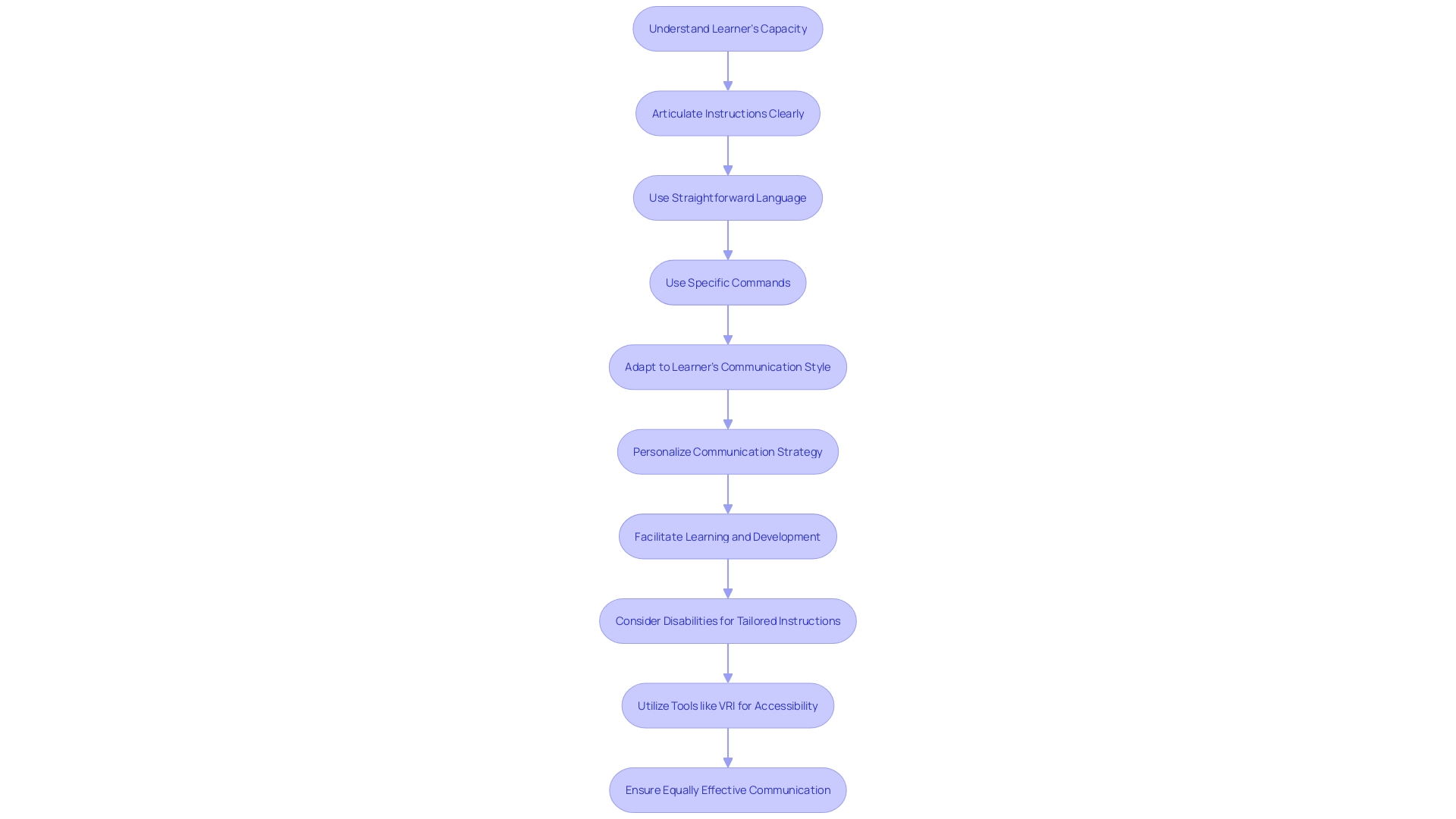
Step 3: Response and Reinforcement
When a child exhibits a behavior that is either harmful or significantly disruptive, such as head-banging or smearing, it's crucial to address these issues with sensitivity and precision. Applied Behavior Analysis (ABA) techniques, including reinforcement like praise or access to preferred items, are part of a tailored approach to promote desired behaviors and reduce challenging ones. A key aspect of this process is understanding the unique needs of each child, as the same behavior can have different functions for different individuals.
For instance, during the pandemic, an increase in behavioral challenges was noted among one third of children with autism. This highlights the necessity for function-based interventions. By utilizing methods like the Interview Informed Synthesized Functional Analysis (IISCA), therapists can discern the underlying reasons for a behavior and respond with strategies that cater to each child's specific situation, thereby enhancing their ability to thrive in various settings.
This individualized approach not only helps in managing immediate behaviors but also in safeguarding the child's mental well-being. As professionals, such as a Board-Certified Behavior Analyst with over a decade of experience, advocate for high-quality, coordinated care, they emphasize the importance of technology solutions in supporting these personalized strategies. These solutions streamline the process for providers and health plans, ensuring that the care delivered is both effective and respectful of the child's needs and dignity.
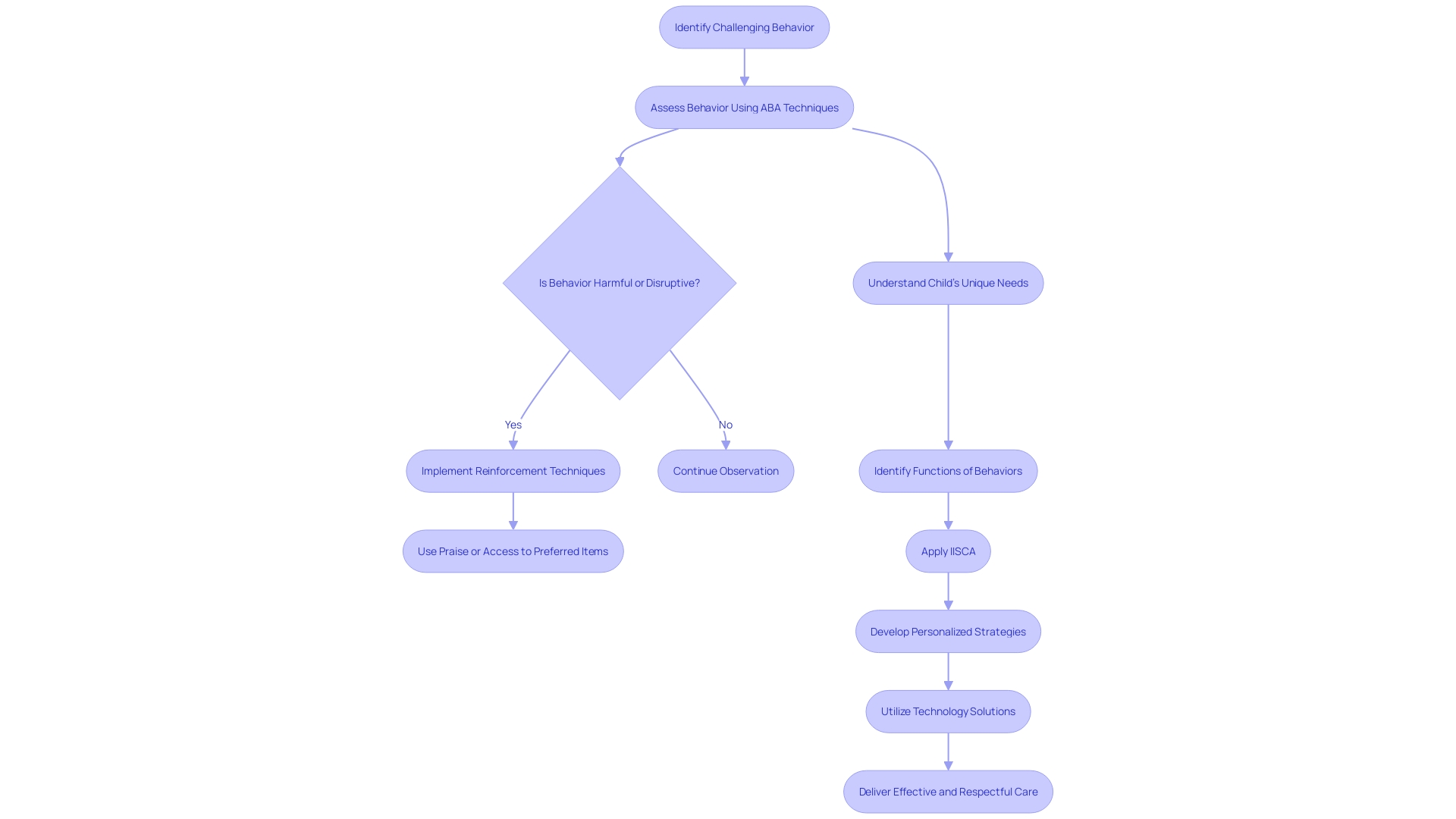
Step 4: Data Collection and Analysis
Discrete Trial Teaching (DTT) is a structured instructional strategy used in Applied Behavior Analysis (ABA) to enhance learning in individuals with autism and ADHD. A critical element of DTT is the meticulous recording of a learner's responses and progress throughout each session. Such data collection is not merely a procedural task but an integral part of the educational process.
It serves as a foundation for analyzing a learner's performance, pinpointing specific areas that require attention, and guiding future instructional strategies.
By employing a methodical approach to data management, educators can ensure the integrity of the data collected during DTT sessions. This includes systematic data cleaning to eliminate any inaccuracies, followed by thorough analysis using statistical models. The subsequent step involves data visualization, which offers a clear and comprehensible presentation of a learner's trajectory, facilitating easier identification of patterns and trends in their learning process.
The importance of high-quality data collection in DTT is underscored by recent research, which highlights the potential pitfalls of intervention studies with poor research design. These flaws can obscure the true effectiveness of an intervention and its potential to produce meaningful change or cause harm. By adhering to rigorous data collection and analysis standards, educators can avoid such pitfalls, ensuring that their instructional decisions are well-informed and respectful of the unique needs of each learner.
In this era of technology-driven education, it's crucial for educators to adopt a critical stance towards the tools and methods they use for data collection. As the experts in teaching and learning technologies suggest, making deliberate and intentional choices about technology can empower educators to effectively collect and utilize data, thereby enhancing the learning experience for students with autism and ADHD.
Statistics educators and professionals are increasingly recognizing the significance of innovative approaches to teaching statistics, as reflected in the upcoming UKCOTS conference. This conference invites educators to share their strategies and experiences, contributing to the broader conversation on effective teaching methodologies, including those applicable to DTT data analysis.
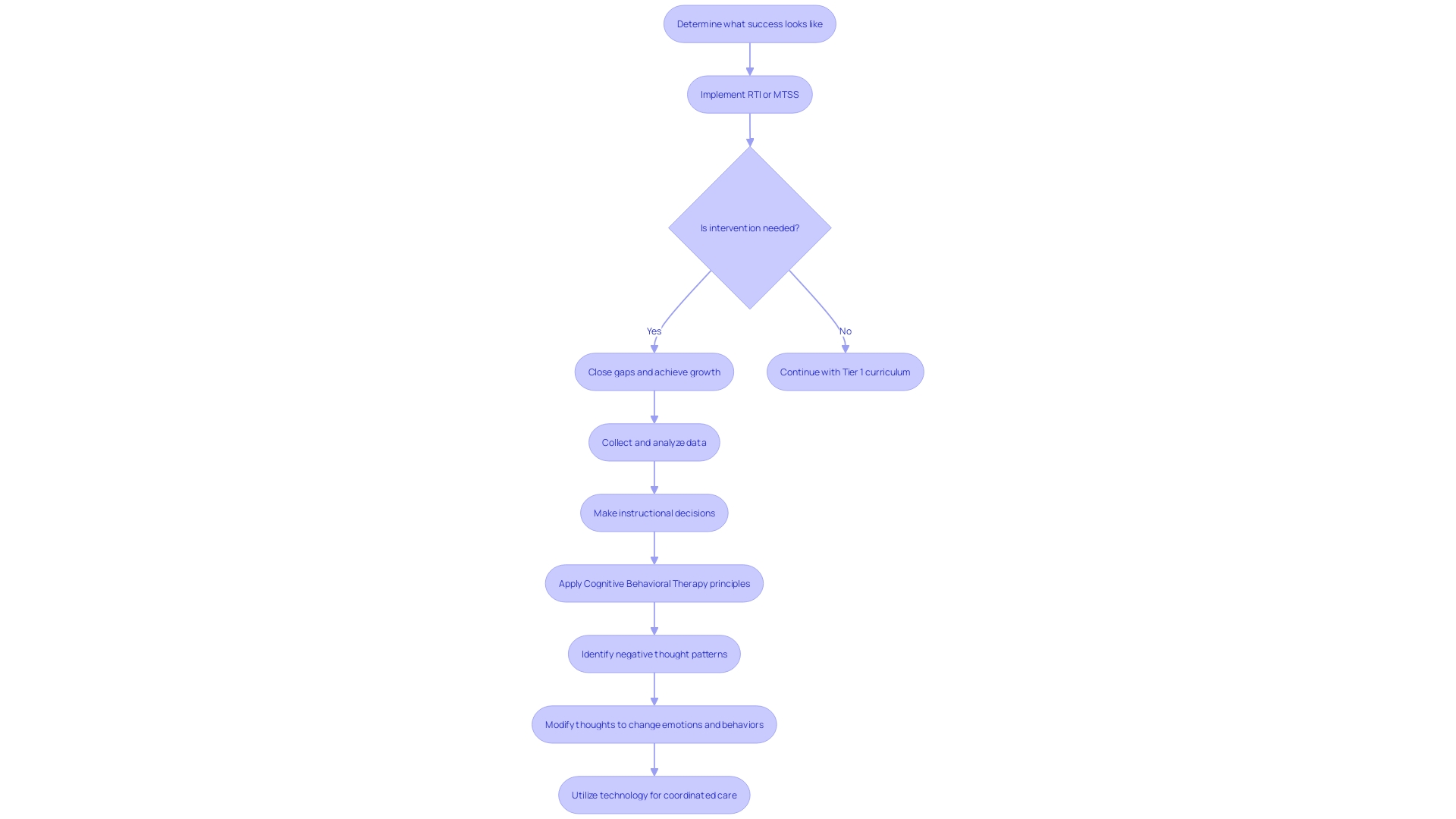
Strategies for Effective Discrete Trial Teaching
When enhancing the application of Discrete Trial Teaching (DTT), a cornerstone in Applied Behavior Analysis (ABA) therapy, it's crucial to prime the learning process. Priming, a technique grounded in the science of learning, prepares the brain to receive new information more effectively. Before diving into DTT sessions, take a moment to set the stage for what's to come, signaling to learners the important concepts they should anticipate.
Another impactful strategy is to embrace the 'Experience First, Formalize Later' (EFFL) approach. This method involves engaging learners in active problem-solving and discussions, allowing them to explore and understand concepts before formal instruction begins. EFFL promotes flexible thinking and ensures that all students, regardless of their learning pace, can achieve success.
Moreover, the integration of technology in therapy has shown substantial benefits. With over a decade of clinical knowledge, experts in the field have been developing technology solutions that support best practices. These advancements facilitate high-quality, coordinated care and streamline the review processes, making therapy more efficient and effective.
Lastly, educational insights reveal the value of content-specific knowledge, particularly in mathematics, where both procedural and conceptual understanding is necessary. For DTT, this translates to a focus on content knowledge (CK) and pedagogical content knowledge (PCK), enhancing the quality of instruction and, subsequently, student performance.
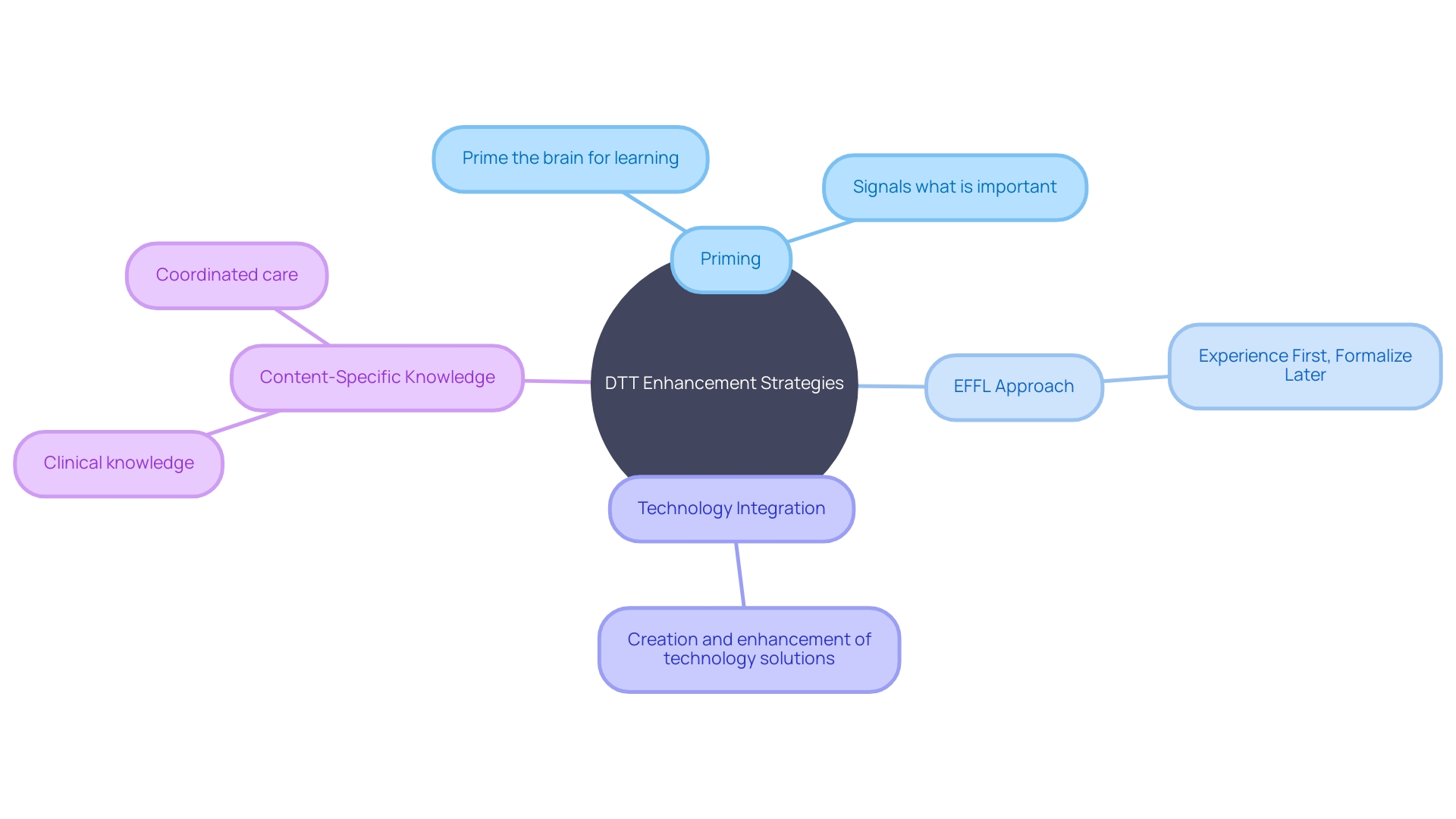
Using Positive Reinforcement
Understanding the profound impact of positive reinforcement is key to fostering desired behaviors effectively. This technique is rooted in the Reinforcement Theory, pioneered by B.F. Skinner, which posits that behaviors can be shaped or modified through the introduction of positive stimuli. When applied correctly, positive reinforcement—such as commendations, awards, or the provision of favorite items—can significantly influence behavior by offering immediate affirmation following the desired response.
Chris Stanley Simon, a proponent of optimism and visionary thought, emphasizes the transformative nature of positive reinforcement. He suggests shifting focus towards acknowledging correct actions, which can inspire a more engaged and fulfilled existence. This approach aligns with leadership strategies in complex business environments, where understanding human behavior and utilizing reinforcement can transcend traditional management, achieving transformational results.
The sentiment that 'catching people doing things right' can have a compelling effect is echoed by Simon's insights shared at The World Business Forum in November 2023. This philosophy not only resonates in leadership and business but also extends to everyday situations, such as training a new pet, where communication barriers exist. Positive reinforcement serves as a universal language of motivation, bridging gaps and promoting understanding across diverse scenarios.
Minimizing Errors and Promoting Learning
Crafting individualized learning experiences is vital for children with autism and ADHD, as it ensures they engage meaningfully in their educational journey. By providing clear instructions and supportive cues, and then gradually removing these aids, we foster a tailored learning environment. This approach not only boosts their chances of success but also aligns with the equitable values espoused by Dr. David (Dan) R. Offord, who championed fair and supportive conditions for all children, especially those with disabilities.
The rising prevalence of autism, as highlighted by Dr. Jan Blacher, underscores the necessity of evolving our methods to accommodate the diverse needs within the autism spectrum. Embracing evidence-based practices and incorporating feedback from the community as part of the intervention design are steps toward achieving this. Moreover, transparently reporting all outcomes, including adverse events, and acknowledging any potential conflicts of interest are crucial for maintaining trust and ensuring the highest standards of care.
Ultimately, these careful considerations in structuring learning trials contribute to the mental health and well-being of children with autism and ADHD, fulfilling our collective responsibility to 'make the race fair' for every child.
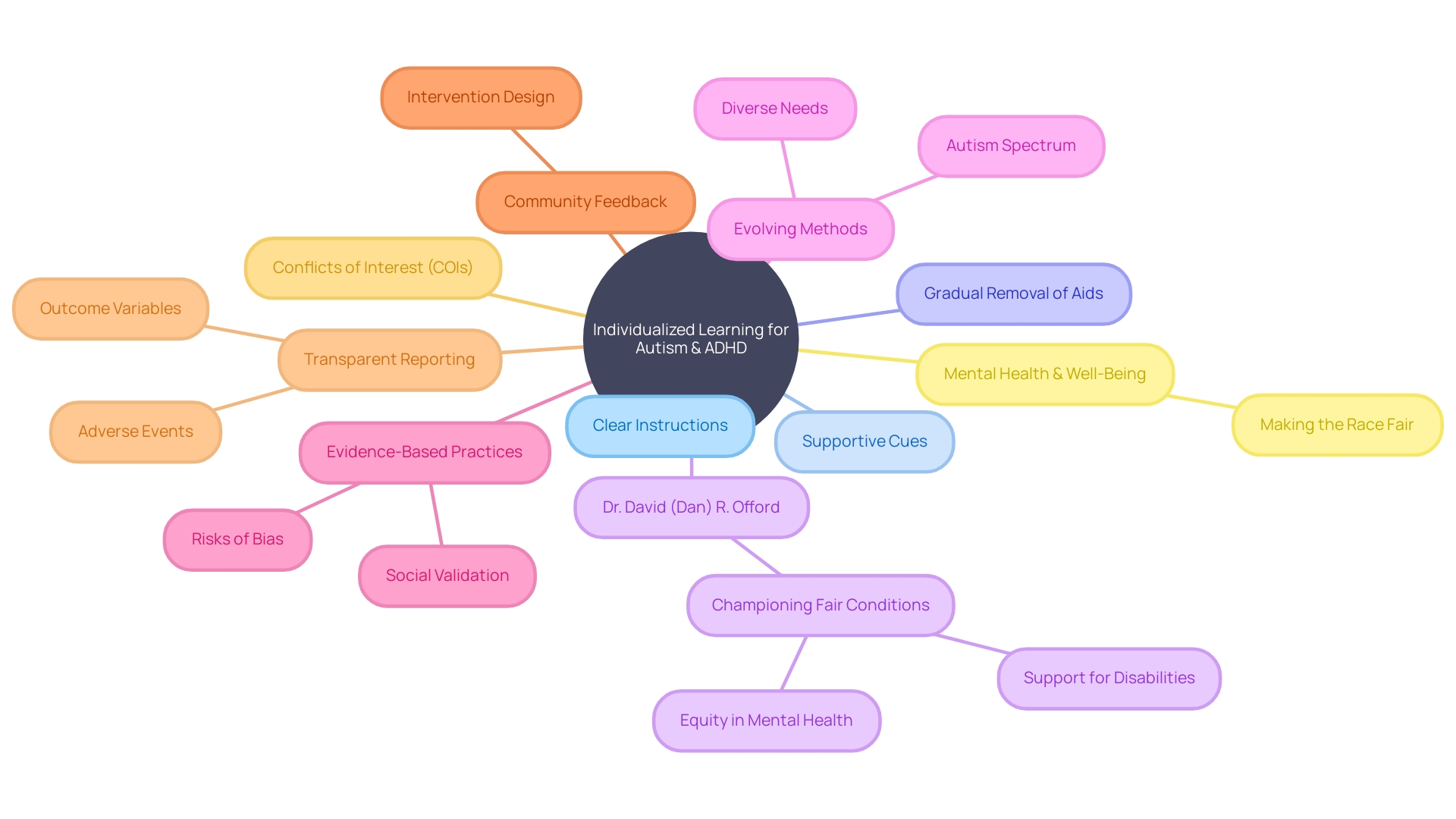
Adapting to Individual Needs
Recognizing that every child learns differently, Applied Behavior Analysis (ABA) must be customized to fit each child's unique profile. This customization can take various forms, from altering educational tools to suit a child's particular learning style to adjusting the progression of teaching sessions at a pace comfortable for the child. Crucial to this personalization is incorporating the child's interests and passions into ABA sessions, which can significantly enhance engagement and outcomes.
For instance, by reimagining complex information into formats that resonate with the child's curiosity, a more stimulating and effective learning environment is established. This strategy echoes the insights of Karmela Peček, an instructional designer, who emphasized the importance of presenting technical data in a compelling manner to encourage autonomous exploration. Similarly, when ABA practitioners infuse the therapy with elements that reflect the child's cultural, social, and linguistic contexts, they're employing Culturally Responsive and Personalized Learning (CRPL) principles.
By tailoring sessions to address specific needs and utilizing robust evidence-based methods, Behavior Analysts ensure each child receives the highest standard of personalized care. Such individualized approaches have been supported by a wealth of clinical experience and are exemplified by the development of technology solutions aimed at coordinating care and enhancing the quality of therapeutic interventions.
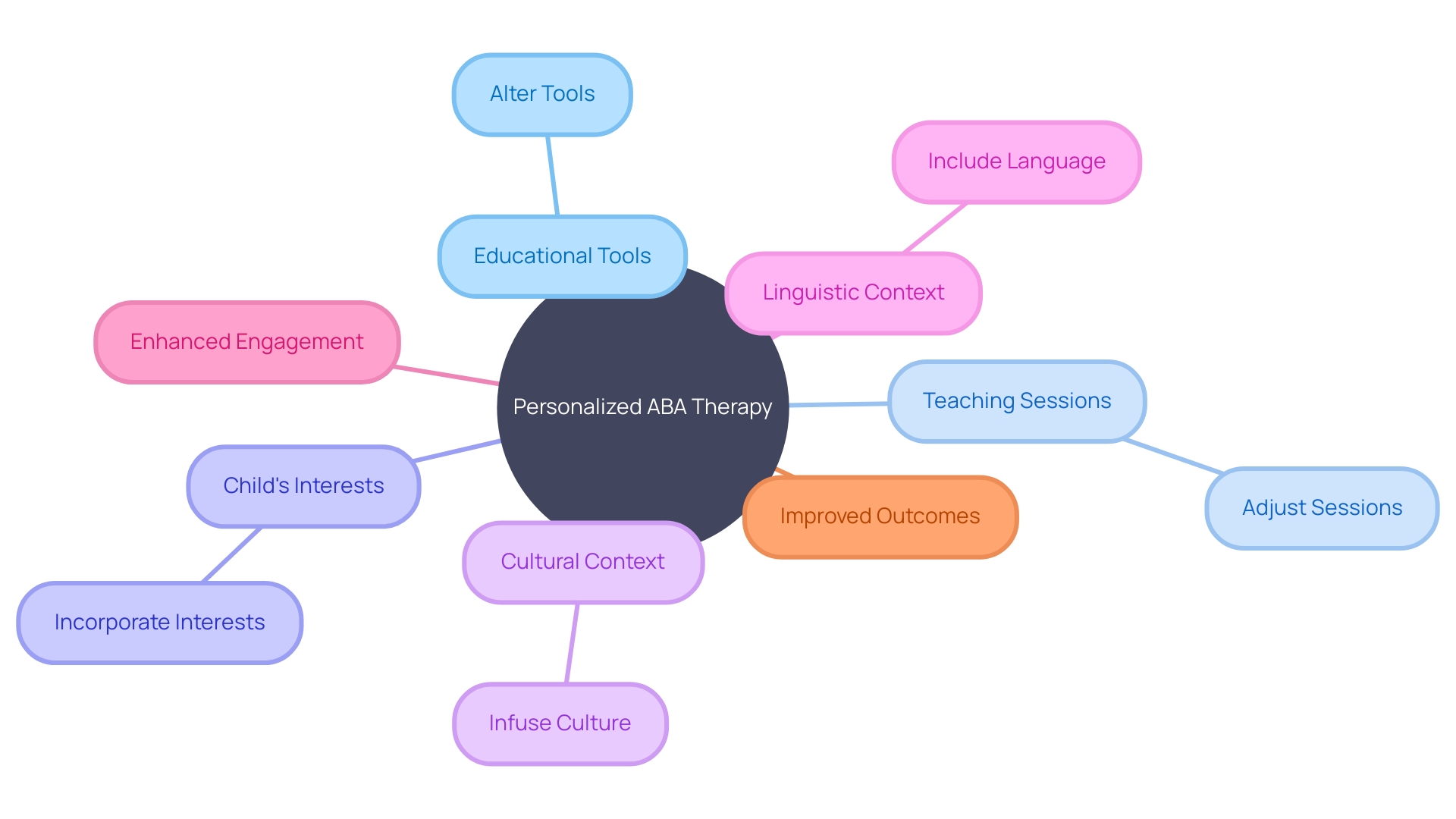
Common Challenges and Solutions
Discrete Trial Teaching (DTT) is a structured instructional technique often used to teach children with autism and ADHD. It breaks down skills into small components and teaches them systematically. However, this method can present challenges, such as the child's lack of engagement or difficulties in generalizing skills to new environments.
To address these issues, it's beneficial to incorporate the child's interests into the learning sessions to increase engagement. Moreover, teaching should extend beyond the clinical setting to include various environments and contexts, aiding the transfer of skills. This approach aligns with the Cognitive Theory of Multimedia Learning (CTML), which suggests that learning is more effective when it is contextually relevant.
For instance, the research team led by Dr. Zandra de Araujo received a $2.5 million NSF grant to develop personalized professional development for algebra teachers, highlighting the importance of context and individualization in instructional practices. Furthermore, educators like Max, who wrote 'Powerful Problem Solving,' emphasize the value of seeing each student as an individual mathematician, or 'mather,' and the need for tailored problem-solving approaches.
In line with fostering a growth mindset, as described by psychologist Carol Dweck, educators can help students transition from a fixed mindset by recognizing and nurturing their potential to develop math skills. This mindset shift is crucial when overcoming learning obstacles in DTT.
Lastly, when considering nonpharmacological interventions for autism, it's crucial to recognize the design flaws in many studies, which hinder our understanding of their effectiveness and potential harm. This calls for a more nuanced and critical approach to intervention research, respecting the diverse needs of individuals with autism.
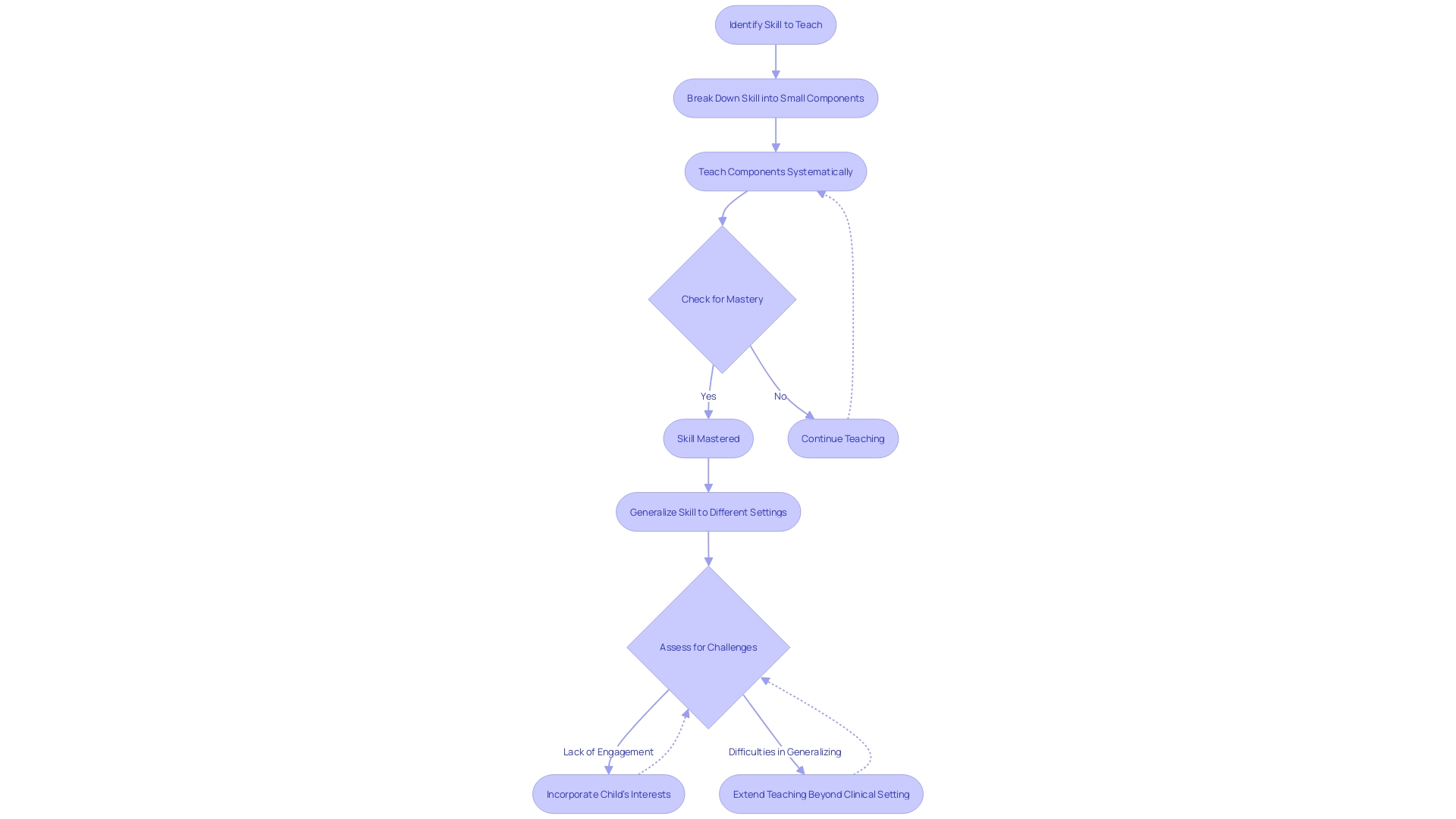
Additional Resources
Delving into Discrete Trial Teaching (DTT) can be akin to tackling a complex math problem. It's not just about the steps, but also comprehending the underlying principles. To assist educators, particularly those specializing in statistics and math education, studies have shown the efficacy of studying worked examples.
These examples, which include fully solved problems, illuminate the process and reduce cognitive load, allowing the learner to focus on pertinent information. This approach is a cornerstone of an innovative professional development (PD) initiative led by Dr. Zandra de Araujo, funded by a National Science Foundation grant of 2.5 million dollars over four years. The project targets algebra teachers, aiming to create a personalized and scalable PD model that leverages their individual strengths and practices.
Furthermore, the significance of a teacher's content-specific knowledge and pedagogical content knowledge (PCK) in mathematics is well-documented. The development of these competencies is crucial for enhancing student learning outcomes. With the rising demand for a skilled workforce, educational systems worldwide are recognizing the importance of equipping teachers with comprehensive knowledge, including PCK, to foster student performance and interest in subjects like math and science.
Such professional enhancement is not only beneficial for the teachers but also translates into improved student engagement and achievement in mathematics, a subject often perceived as challenging.
Given these insights into effective learning and PD strategies, it is clear that resources tailored to Discrete Trial Teaching must be both evidence-based and practitioner-focused. For those seeking to refine their DTT methods, it's essential to access resources that embody these principles, offering clarity and support in the intricate journey of educational growth.
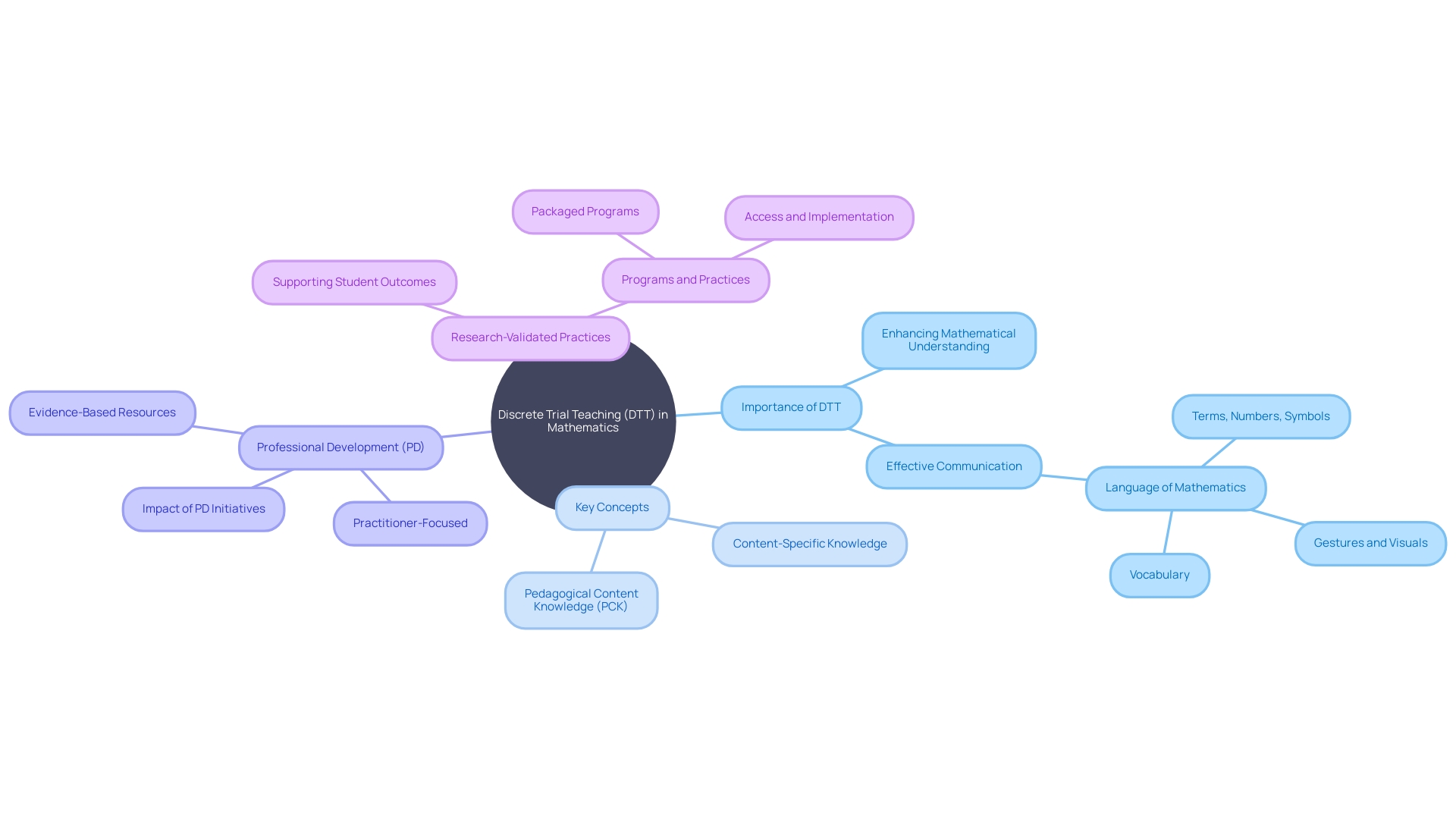
Conclusion
In conclusion, Discrete Trial Teaching (DTT) is a structured instructional strategy used in ABA therapy to enhance learning in individuals with autism and other developmental disorders. DTT breaks down complex tasks into smaller steps, allowing for step-by-step instruction and mastery of each component. Recent guidelines highlight the importance of high-quality ABA practices, and innovative procedures like IISCA improve the assessment of problem behaviors.
DTT offers tailored interventions in a challenging period where behavioral issues have intensified. By understanding and applying the key steps in DTT, parents and advocates can navigate challenges and ensure their children's well-being. The steps involve preparation and setting, stimulus presentation, response and reinforcement, data collection and analysis, and adapting to individual needs.
To implement DTT effectively, create a focused learning environment and deliver clear instructions. Use positive reinforcement to encourage desired behaviors. Collect and analyze data to track progress and guide strategies.
Adapt interventions to meet the individual needs of each child.
Address challenges by incorporating interests, extending teaching to various environments, and fostering a growth mindset. Seek evidence-based resources to support educational growth and personalized care.
By following these strategies, parents and advocates can empower themselves to support their children with autism and other developmental disorders. Through effective DTT implementation, tailored interventions can set children up for long-term success and well-being.




